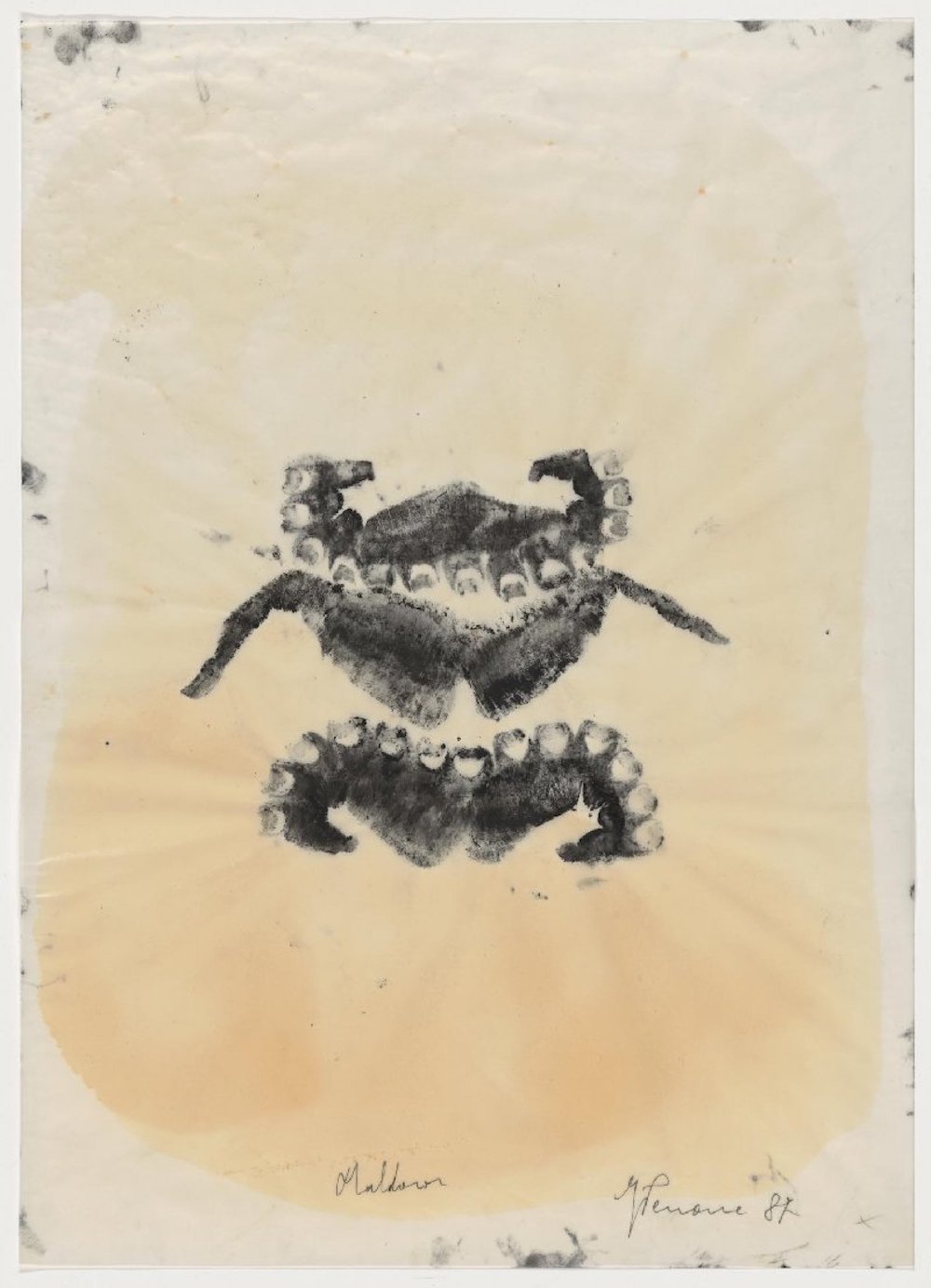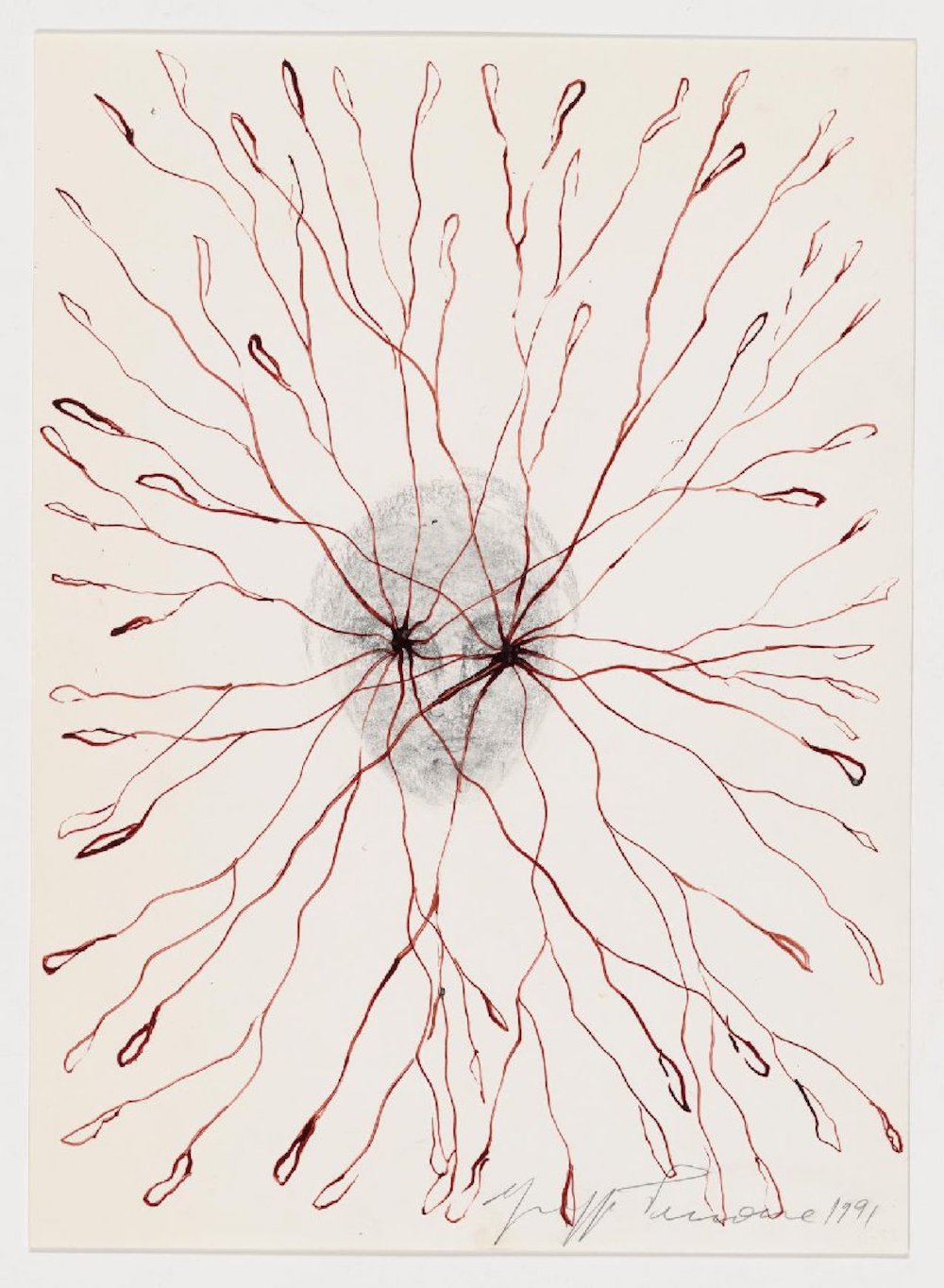In the middle of the otherwise empty parking lot, a square of green grass houses a dark bronze tree trunk. The leafless branches expand out from the top of the trunk and amidst those branches another tree of a silvery color is nestled upside down. The cluster of branches where these two trees meet is adorned with mirrored panels carrying images of the ground below and the sky above. The work, Identity (Identità) (2017) exemplifies the way in which the artist Giuseppe Penone delves into a highly personal relationship with nature to make his art from often disparate elements.
There are sculptures such as the Breath (Soffio) Series (1978), in which the artist’s breath is turned into a terracotta sculpture. The entire exhibition is filled with drawings that often read as personal notes by the artist to himself about his practice or propose oblique relationships to other works such as the drawing Breaths (Soffi) (1977), in which the silhouette of the artist in relationship with the clay sculptures emenates from his breath. The ghostly figure of the artist is almost the same height as the breath he exudes, and although the actual clay sculptures aren’t quite that big, it bridges the relationship between the work, the artist and the process. One of the terracotta sculptures sits framed within a window out of the museum and on either side the alcove has been fitted with mirrors, multiplying the breaths being materialized.
One of the more spectacularly installed combinations of works is seen from the hallway walking along the vitrine housing Thoughts and Sap—an extended frottage (or rubbing) on linen of an acacia tree that includes an essay by the artist. Through an open door from the hallway a viewer can see the wall on which Propagations (1994–2022) has been drawn. The is covered with thin concentric lines radiating from a central fingerprint on one side and five fingerprints on the other.

Giuseppe “Penone, Maldoror,” 1987.
Looping and self-reference are essential to Penone’s practice. The complexity of his relationship to art making is most visible in his projection piece Reversing One’s Eyes (Rovesciare i propri occhi) (1970) which is comprised of six slides of the artist standing on a tree-lined country road. As the images progressively zoom in on the figure of the artist it becomes obvious that where his eyes should be there is instead something sparkling. When the final close-up frame appears, the viewer sees that the artist has placed mirror lenses over their pupils reflecting back the rows of trees beside him.
The relationship of Arte Povera to art history is complex, but within the history of art in Italy it enabled art making to forgo the need for materials considered traditional (and therefore noble) such as marble or bronze and instead utilize things that derived from the everyday. Often the images and objects that are created by these artists are enigmatic, bound up by complex processes and hard to fathom. For visitors interested in this of art making, “River of Forms: Giuseppe Penone’s Drawings” is a welcome dive into this important and protean artist. For others, it may simply be too far of a reach.
River of Forms: Giuseppe Penone’s Drawings
Philadelphia Museum of Art
On view through February 26, 2023


